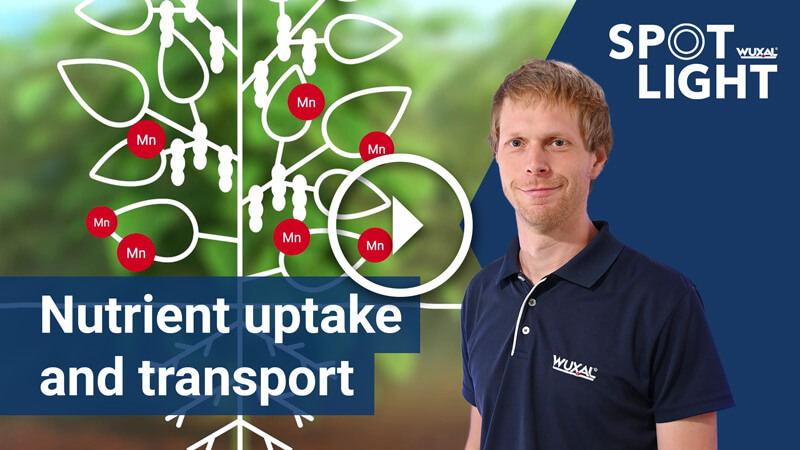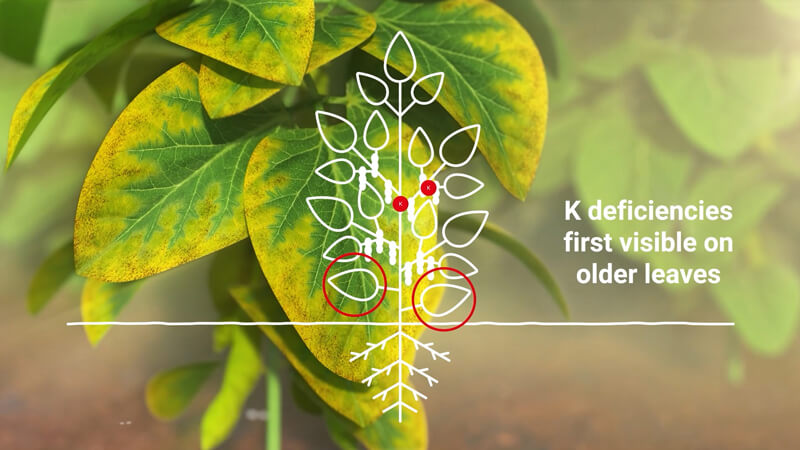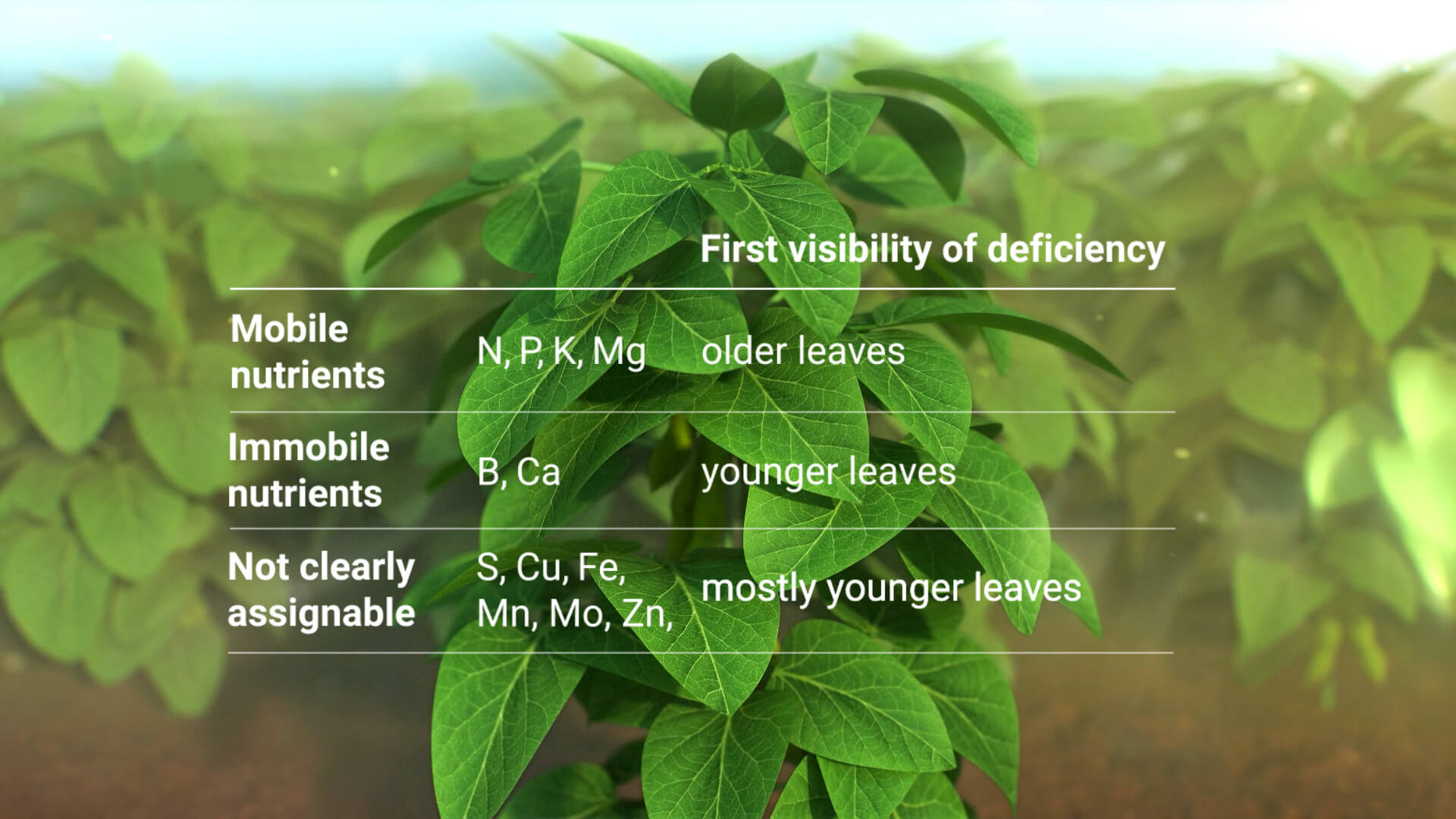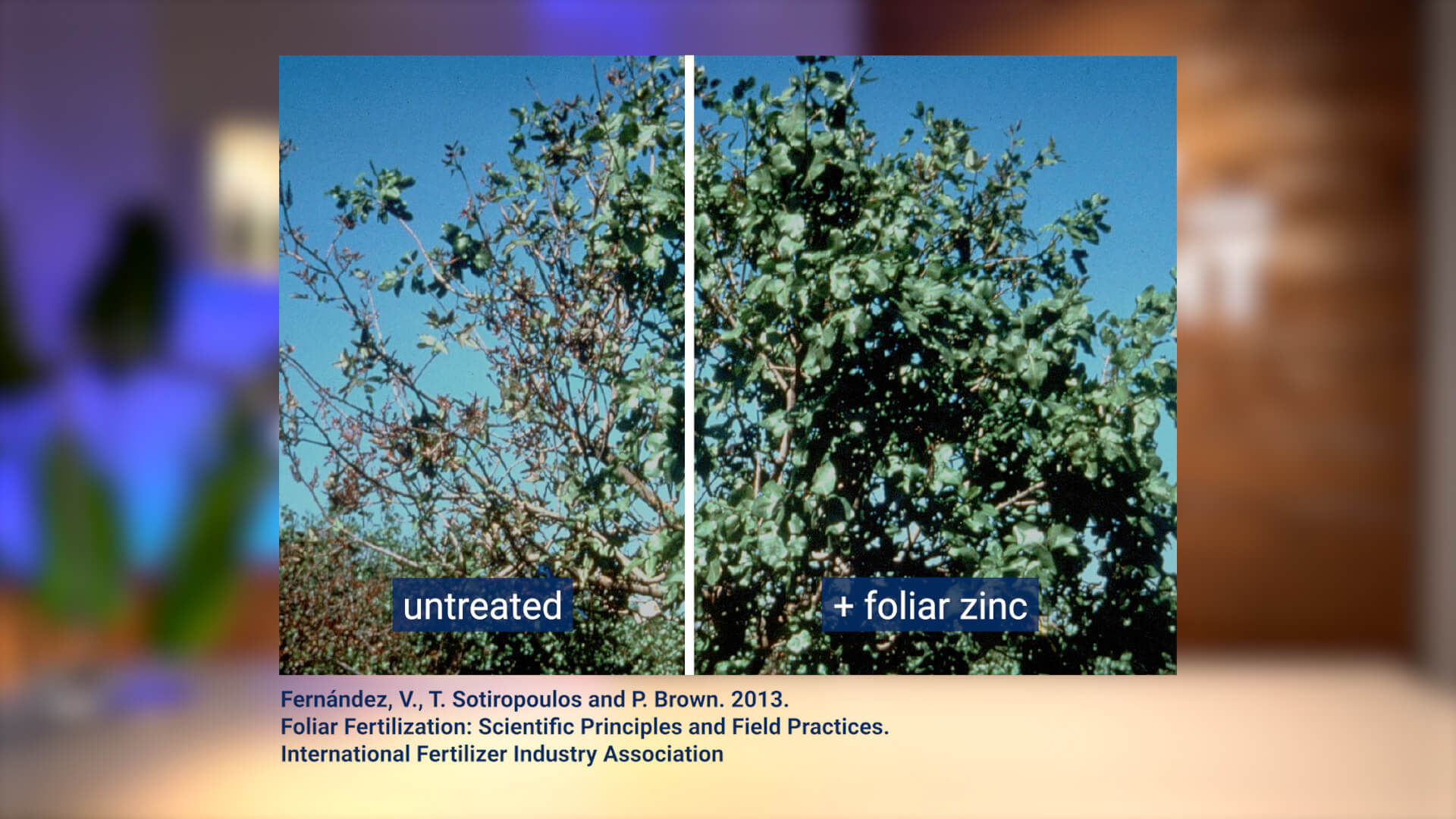Nutrient uptake and transport
22.12.2022 – Plants can take up nutrients in different ways and can distribute them within the plant. However, distribution does not work equally well for all nutrients.
In this episode of WUXAL Spotlight, we talk about what nutrient distribution depends on and give you tips on how you can better recognize and distinguish between different deficiency symptoms.

Watch the video on our YouTube channel.
Basics of nutrient uptake and transport
Most nutrients that are needed by the plant are taken up via the roots from the soil. There are two different vessel systems that transport nutrients within the plant – the xylem vessels and the phloem vessels. Xylem vessels transport water and dissolved nutrients from the roots up to the leaves. Phloem vessels transport sucrose, amino acids, and nutrients between different parts of the plant.
Functioning of xylem vessels
The xylem vessels function more or less like a straw. The plant releases water into the surrounding air through stomata on its surface. This process is called transpiration. The transpiration and the water consumption for metabolism cause a lack of water in leaves and other plant parts. This lack of water leads to a suction effect throughout the complete plant, all the way down to the roots. The result is that new water is being absorbed into the plant from the soil. Just like when you drink from a straw. And this water carries new nutrients to the plant.

Functioning of phloem vessels
Especially if the nutrient supply from the soil is insufficient, the phloem can move nutrients within the plant to where they are needed most. Places where nutrients are needed most are younger plant parts, growing points and fruits.

Phloem transport in case of nutrient deficiencies
Some nutrients, such as potassium, can move easily within the plant through the phloem vessels. If a plant has a lack of potassium, the potassium remaining is moved to the younger leaves and fruits. That’s because these are the most important spots of plants growth. Therefore, potassium deficiencies in a plant can be spotted on older leaves first.

Other nutrients such as manganese, cannot be transported well between plant organs. In casees of a manganese deficiency from the soil, the plant can’t shift the remaining manganese from older leaves to another place. Therefore, deficiencies of manganese occur mostly on younger leaves. This limits plant growth.

Differentiation of deficiency symptoms
The nutrients that are mobile in almost all plants are nitrogen, phosphorus, potassium, and magnesium. The least mobile are boron and calcium. All other nutrients cannot clearly be assigned, and mobility often differs between different plant species. Nevertheless, deficiency symptoms of these limited mobile nutrients more often appear on younger plant parts first.

Identification on nutrient deficiencies
A nutrient deficiency cannot be identified solely by where it appears first. To assure which nutrient deficiency your plant is suffering from, we need to look at other parameters such as the type of discoloration or even the deformation of plant parts.
We have created a poster for you to easily identify your nutrient deficiency step by step. You can download this poster via the button below.

The approach we describe in the poster is a quick evaluation of the situation in the field. In addition to this it is always recommended to do a separate leaf analysis to make sure how many nutrients are actually present in the plant.
Foliar fertilization cures nutrient deficiencies
Once we have identified the deficiency, we want to do something about it. The best and fastest way to correct nutrient deficiencies is through targeted foliar fertilization. Foliar fertilization is a well-known technique for professional growers worldwide to apply nutrients directly to the leaves and fruits. Plants can take up the nutrients directly through their surface. That’s why foliar fertilization is a shortcut to supply nutrients to where they are needed most.

We can see what effects foliar fertilization can have with low nutrient mobility, using the example of a pistachio tree. In the pistachio, zinc is highly immobile. That’s why the plant will suffer from zinc deficiency if not enough zinc can be taken up through the soil.
But if you now apply a zinc foliar fertilizer to only a part of the plant, this part will grow healthy. That’s what we can see in the picture. Only the right part of this pistachio tree received a foliar application of zinc, and only this part is healthy. Since zinc cannot be transported within the plant, the left side of the tree is stunted, and we can expect large yield losses.

This example was intended to illustrate the effect of low phloem mobility, and that foliar fertilization can make a huge difference in the nutritional status.
To prevent from latent to more severe deficiencies, you should look for more effective and balanced nutrient solutions. This will benefit your plants’ health and thus your return of investment.
Find out how your product of choice can push your personal business. Learn what WUXAL® has to offer and who the people behind this brand are. Sign up now!



